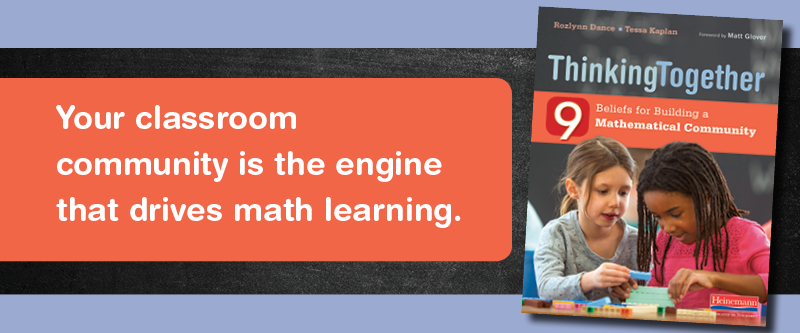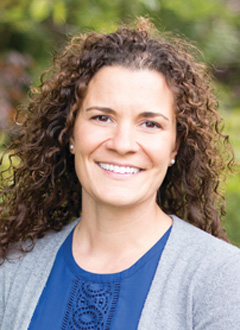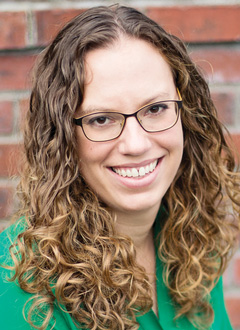
Mathematical Confidence: Why it Matters
In order for children to make sense of math, they must believe that they are capable of understanding and learning math. There is a pervasive belief in our culture that being good at math is an innate ability. However, researchers like Carol Dweck have worked hard to disprove this belief. According to Dweck (2006), people with a fixed mindset believe that our abilities and intelligence cannot be changed, while people with a growth mindset believe that our abilities can be changed through study, practice, and hard work. As teachers, we need to reinforce a growth mindset in our students. Mathematical confidence reflects a growth mindset and includes a willingness to persevere, a positive attitude toward mistakes, a willingness to take risks, and self-reliance.
Perseverance
Children’s mathematical confidence affects their approach to challenges and failure. Children with low self-confidence may fail or make a mistake and define themselves by that failure, deciding that they are not smart. When faced with a challenge, these children may get angry and give up because they feel they are not smart enough to figure it out. On the contrary, students who see themselves as “smart” may believe that any struggle means that they are not smart. This may lead them to seek to preserve their sense of “smartness” by avoiding something that might take work. Children who possess mathematical confidence look at challenging math problems in a completely different way. Failure is a chance to learn and grow. It is a chance to reflect and think, “What can I do better next time?” Common Core Mathematical Practice Standard 1 asks children to “make sense of math problems and persevere in solving them” (CCSSO 2010). Children with mathematical confidence are able to persevere through challenging problems, trying and trying again until they figure them out. It is our job as teachers to help them gain this perseverance.
Valuing Mistakes
Fear of making mistakes, and being labeled as “wrong” or “failing,” is one of the greatest obstacles to perseverance and to mathematical confidence. When students fear mistakes, it halts their ability to truly problem-solve. They are hesitant to try a strategy because they don’t know for sure that it will get them the right answer. Children who have strong math confidence are unafraid to make mistakes. They know that mistakes are stepping-stones that help us learn. Jo Boaler, in her book Mathematical Mindsets, discusses brain research that shows how our brain grows and develops each time we make a mistake. When students solve a problem and get the answer right, no new neural pathways are formed. However, when a student makes a mistake, synapses in the brain fire, forming new pathways and connections. Most surprisingly, new brain pathways are formed from making mistakes even when we don’t know we are making them (Boaler 2016). Boaler’s research shows us that children and adults learn most when they are challenged and make mistakes. In a math classroom, mistakes should be celebrated as “great mistakes!” and learning opportunities, not looked at as simply wrong answers.
Taking Risks
To be successful mathematicians, young children also need to learn to be brave with new ideas. They need to feel confident enough to take risks, try new strategies, and share their thinking even when it contradicts that of others. When students believe in themselves enough to take mathematical risks, they know that if one strategy doesn’t work, they can always try another. They feel confident that if they don’t get it right the first time, they’ll be able to figure out a way to solve the problem eventually. When a new, unfamiliar strategy is suggested, they are willing to give it a go. Helping students develop the confidence they need in math will allow them to take the risks necessary to truly make sense of mathematics.
Self-Reliance
When students feel brave as mathematicians, they do not rely on the teacher to tell them what to do or how to solve a problem. They do not look for confirmation of their answers but instead check their own work and justify their thinking. We need to help them develop the mathematical confidence to persevere through tough problems, embrace productive mistakes, and challenge themselves by trying new strategies and ideas without constantly looking to the teacher for the answers.
Encouraging Mathematical Confidence
It is our responsibility as teachers to help set up a classroom environment that allows students to feel confident in their mathematical abilities as they persevere, make mistakes, and take risks with new ideas. When students possess this confidence, little stands in the way of their mathematical development. Below are some ways to begin building this environment for your students.
Evaluating and discussing self-confidence
At the beginning of the school year, one of the most important things we do as teachers is get to know our children. It is during this “get to know you” time that we can easily learn about our students’ confidence levels. You can learn how your students perceive themselves as mathematicians through discussions or a short survey. A math attitude survey could include a rating scale that students use to agree or disagree with statements such as “I enjoy math” or “math is useful”. It is best to give students the opportunity to independently fill out these surveys on paper so that they feel safe to be honest. For primary students, images like emojis or smiley faces can be used to help them think about their ratings.
Once you have gauged your students’ confidence levels, introduce the idea that everyone can learn math, even if they feel like they aren’t good at it. Begin by encouraging students to think about something they are good at doing now that they weren’t always good at. Examples they often come up with are playing a particular sport, riding a bike, or reading. Then encourage students to think about all the things they had to do to get better at that particular activity. To ride a bike, they probably had to have an adult’s support as they learned to balance. Then they needed to practice in order to get better and better at staying up on their own.

This activity can then be extended by having students think about things they are “good at” and things they are “not good at.” Encourage them to make a list and think deeply about their strengths and some of the areas they struggle with. Finally, ask them where “doing math” would fall in their two categories. Some may indicate that they feel confident in math, but many will say that they are not good at it. Close the discussion by relating math to the initial activity they thought about. Math is just like learning how to ride a bike. Students may feel like they are not good at it right now, but with practice and perseverance they will learn and grow as mathematicians.


Rozlynn Dance is a first grade teacher in Federal Way, Washington with more than a decade of elementary classroom experience. She has worked closely with colleagues developing curriculum and providing mathematical professional development for K–5 teachers.

Tessa Kaplan is a K–6 Instructional Coach in Shoreline, Washington who is passionate about helping young children truly believe in themselves as mathematicians. She has 10 years of classroom teaching experience in public schools in Brooklyn and Washington State.


